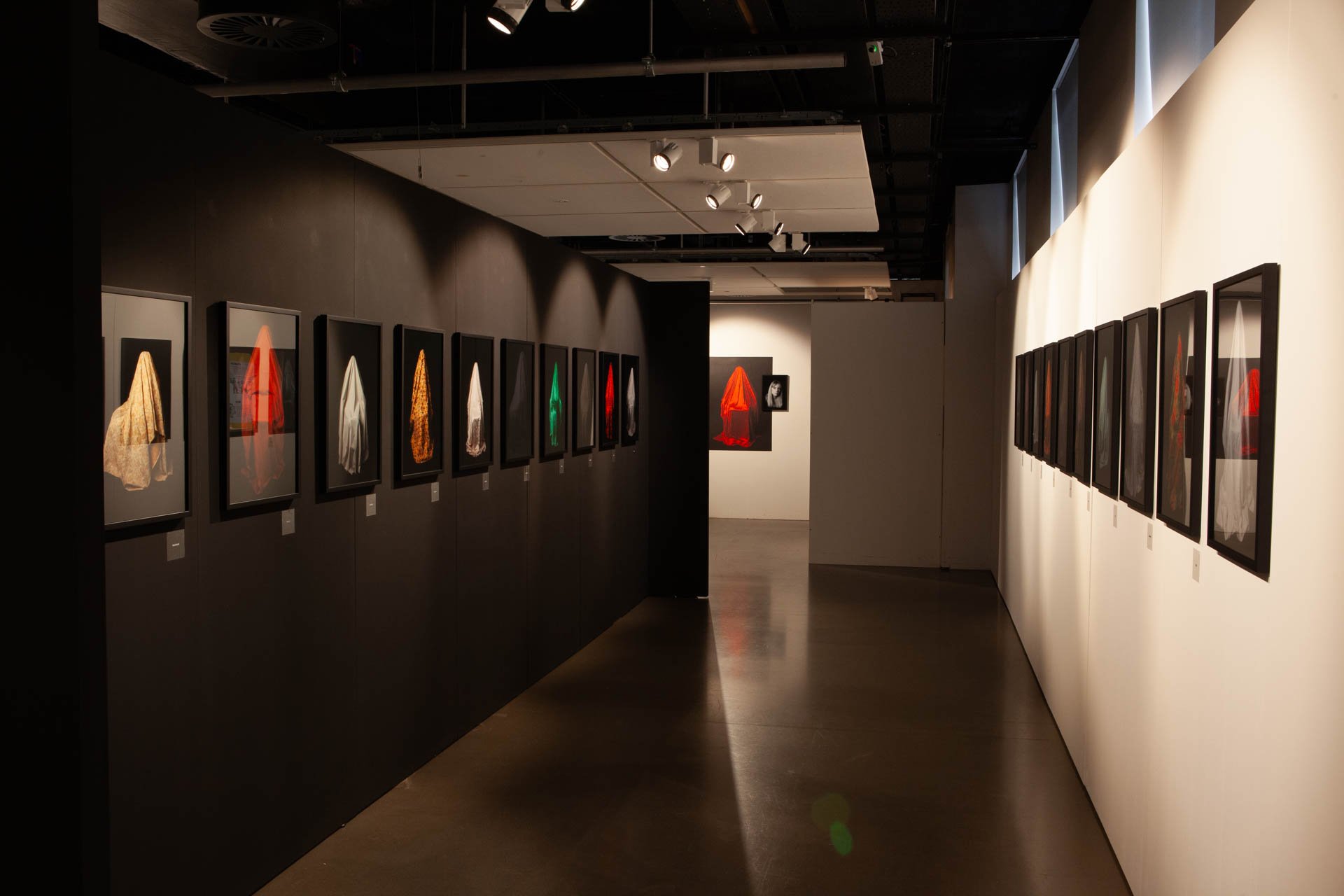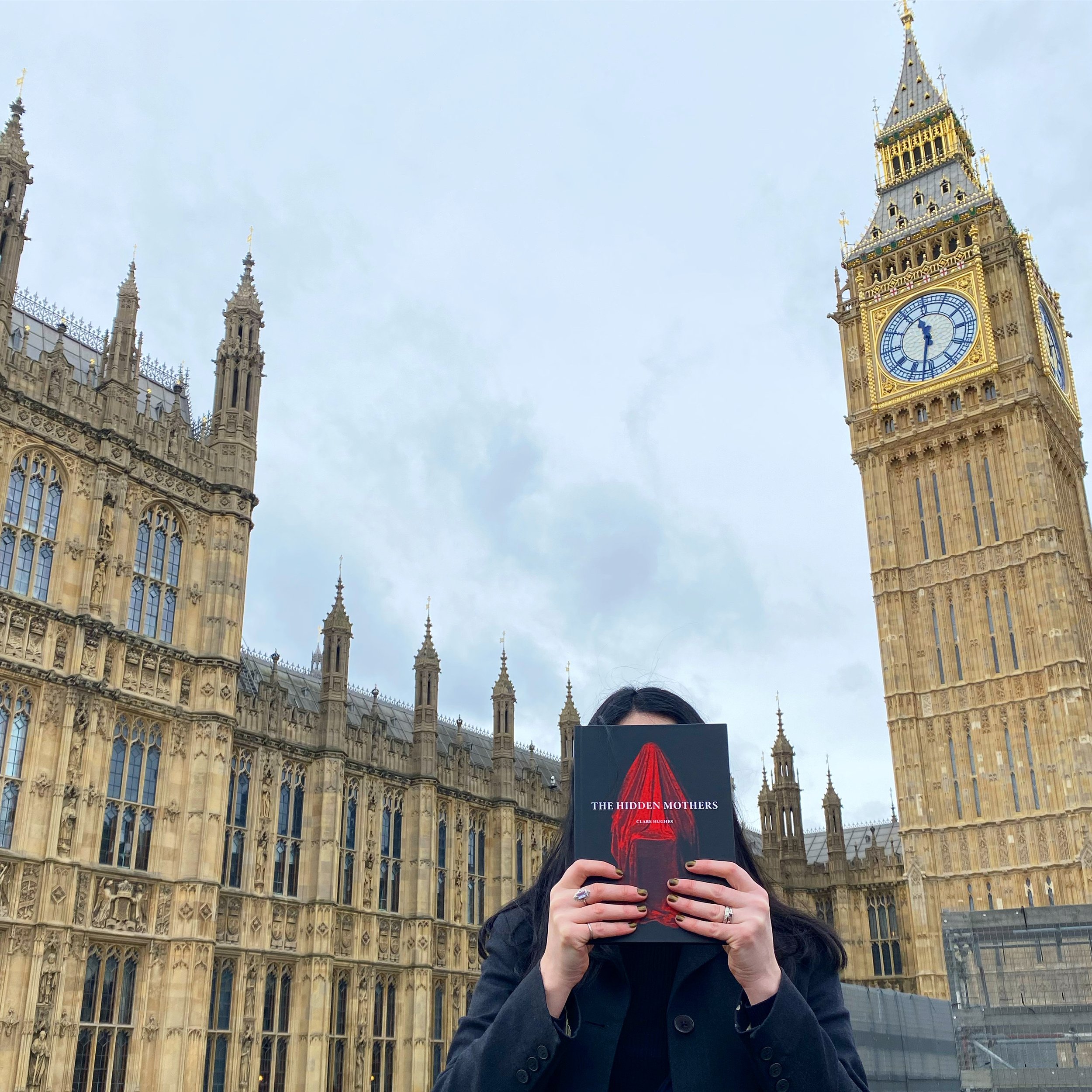The Hidden Mothers









Background
During the late 19th-century, the trend in studio photography portraits of infants was booming.
However the photographic process required the subject to sit still for several minutes. To get around this, the infant's mother was concealed in fabric, disguised as furniture while holding the baby steady. The resulting images have come to be known as 'hidden mother' photography.
When photographer Clare Hughes recovered from her first pregnancy she was also coming to terms with her first experience of Hyperemesis Gravidarum (HG). A severe pregnancy illness affecting women of all ages and backgrounds, its symptoms include constant nausea, vomiting, and dehydration. It leaves the mother distraught after months of physical and emotional turmoil. HG has gone virtually unrecognised by the medical establishment despite an estimated 30,000 suffering from it every year in the UK.
HG, and the lack of clinical care provision, has resulted in terminations, prohibited choice and has been associated with depression leading to suicide.
The Hidden Mothers is a participatory project with HG sufferers. Based on archival research it uses the Victorian 'hidden mother' visual metaphor for how its participants have felt during their pregnancies. The photographed creative act helps distance the participant from her experience, providing a powerful cathartic perspective, while contributing to the message: we won't be hidden anymore.
Work from The Hidden Mothers has been presented at the Houses of Parliament, London, UK, in collaboration with the charity Pregnancy Sickness Support and at the International Colloquium on Hyperemesis Gravidarum 2024, California, USA, in collaboration with the charity HER Foundation.
The Hidden Mothers is supported by One King's Impact
Making change
I couldn’t believe the response to my call out for women to take part in The Hidden Mothers. I had women of all ages from all over the world sending me their Hyperemesis Gravidarum stories just wanting to be heard. The trauma and suffering women are going through at the most important part of our lives is horrendous. I was all too aware that it wasn't possible to tell every story as important as they all are. So I set up @thehiddenmothers Instagram community so that we could share our stories and women could take their own Hidden Mothers selfie too.
The four day photoshoot took place at the very poignant Foundling Museum in London. The Museum tells the story of the UK’s first children’s charity and its first public art gallery – the outcome of a centuries-old project designed to care for and educate London’s most vulnerable children. And whose very own patron Her Royal Highness The Princess of Wales suffered with Hyperemesis herself throughout her pregnancies. I photographed twenty one women in total concealed under fabric to look like a piece of furniture and revealed so that their identity is seen and can’t be ignored.
I was truly honoured to tell the women sitters’ stories and take their portraits. It was humbling to hear how far some women traveled to take part. This showed how important this was to bravely share their experience through their involvement.
The Hidden Mothers book was produced and on display alongside selected photographic prints from the project for the first time at the Houses of Parliament in collaboration with Pregnancy Sickness Support. MP Sara Britcliffe and Minister for Women’s Health Strategy Maria Caulfield MP, spoke at the event for for Unveiling The Hidden Mothers: Empowering Change for Hyperemesis Sufferers.
The event held a spotlight on “The Hidden Mothers, a poignant and revealing initiative that showcases the real and often unseen struggles of women battling Hyperemesis. Through powerful photographs and narratives, the project illuminates the emotional and physical toll of this condition, challenging the prevailing dismissal and ignorance surrounding it.
Our goal is to transform perception into empathy and ignorance into action, thereby improving the support and treatment for those affected. We hope you will join us in this important conversation and be part of a movement that shapes a more empathetic and informed approach to women's health. Your presence will not only signify solidarity with Hyperemesis sufferers but also provide a unique opportunity to engage with experts and individuals with lived experience. This is a chance to gain first-hand insight into the challenges these women face, an understanding crucial for informed policymaking and advocacy.”
Maria Caulfield’s speech affirmed that “We are absolutely determined in the next 12 months to make progress” with HG specifically being put on the women’s health strategy. “This shows that government is taking this extremely seriously and we want to work hand in glove with you to better identify women who are affected and then help get through pregnancy”.
MP Maria Caulfield, CEO of PSS Charlotte Howden and MP Sara Britcliffe at Unveiling The Hidden Mothers: Empowering Change for Hyperemesis Sufferers
The Hidden Mothers exhibition is taking place at The Science Gallery London, 3rd - 14th June 2025.
Since launching it was featured on BBC News London Live with an article on BBC News Online.
The Hidden Mothers has also been featured by Photovoice who work in partnership all over the world on projects and activities which combine ethical photography and community engagement, and deliver positive social change.




